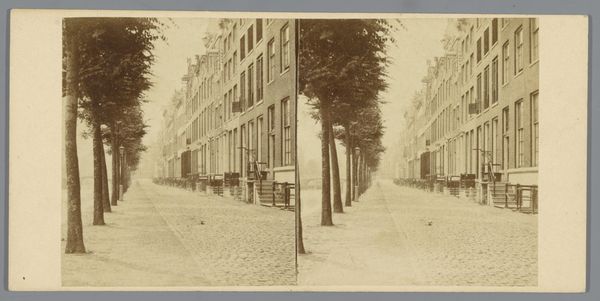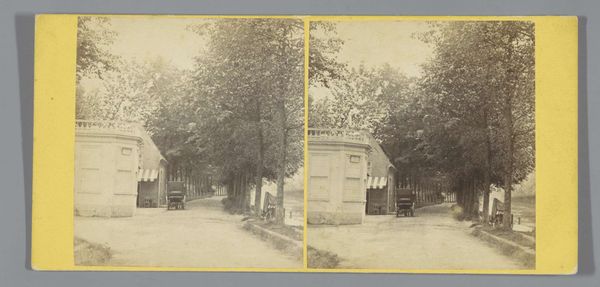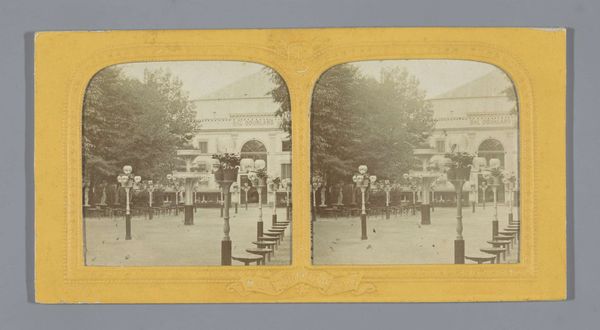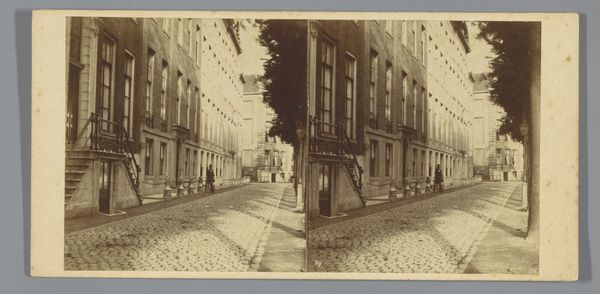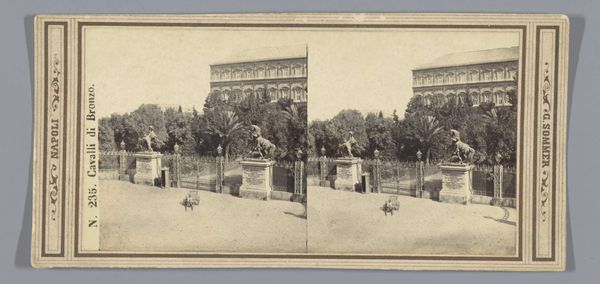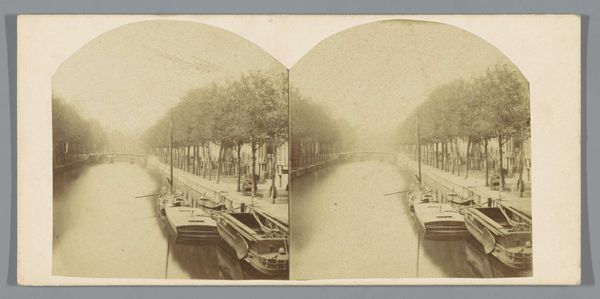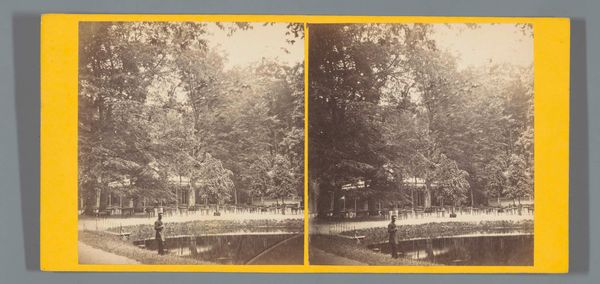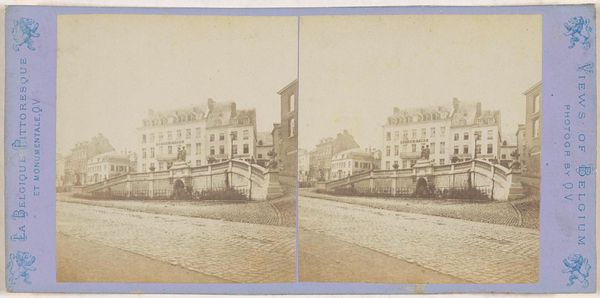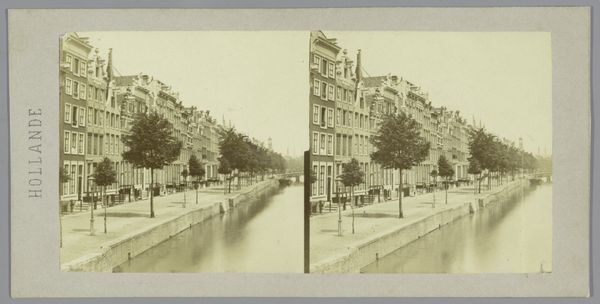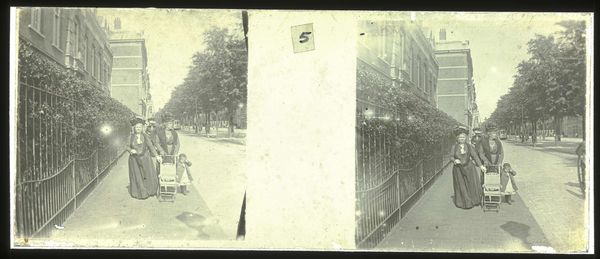
#
photo of handprinted image
#
aged paper
#
print print-like
#
homemade paper
#
paper non-digital material
#
photo restoration
#
unrealistic statue
#
folded paper
#
paper medium
#
cutout
Dimensions: height 86 mm, width 174 mm
Copyright: Rijks Museum: Open Domain
Curator: Pieter Oosterhuis’s stereograph, "Nieuwegracht in Utrecht," created sometime between 1859 and 1865, presents a canal scene bathed in sepia tones. It’s currently held in the collection of the Rijksmuseum. My first thought is how evocative and sepulchral it is, and in an appealing way. Editor: Sepulchral? I find a certain bourgeois charm in it, particularly how Oosterhuis composes the canal’s perspective, drawing the eye toward a vanishing point subtly disrupted by that arched bridge. It’s an astute manipulation of pictorial space for a photographer of his era, wouldn’t you agree? Curator: Without a doubt, the lines are exceptionally well balanced. Yet, I'm compelled to look past this picture’s formal components to consider how Utrecht's waterways played an instrumental role in facilitating trade for those outside the elite class and their subsequent role as social and geographic arteries connecting disparate classes in society. Editor: Your contextual lens adds another compelling layer. But it’s the geometric play of light and shadow, a formal technique deftly implemented to reveal depth, that primarily strikes me. Oosterhuis' manipulation of this emerging photographic technology allowed new access to visual expression; what did it allow everyday people access to, socio-economically, would you suggest? Curator: Well, photography granted some citizens a burgeoning means to capture their changing urban and suburban experiences outside of a high class portraiture tradition. However, access often remains uneven, and this new technology does not assure accessibility. Now, perhaps we can look beyond merely light and form? How do we interpret the societal role canals play— Editor: I respect your social critique but must also point out that Oosterhuis has presented here is a careful consideration of planes and textural variation that deserves attention—how the water reflects the light, how it defines shapes while obfuscating visual information with shadows. Curator: You’re right. It presents interesting aesthetic issues, so perhaps together, with an understanding of history and material construction, we can reach better conclusions. Editor: Precisely, it seems that looking at his "Nieuwegracht" from both sides is very valuable.
Comments
No comments
Be the first to comment and join the conversation on the ultimate creative platform.



